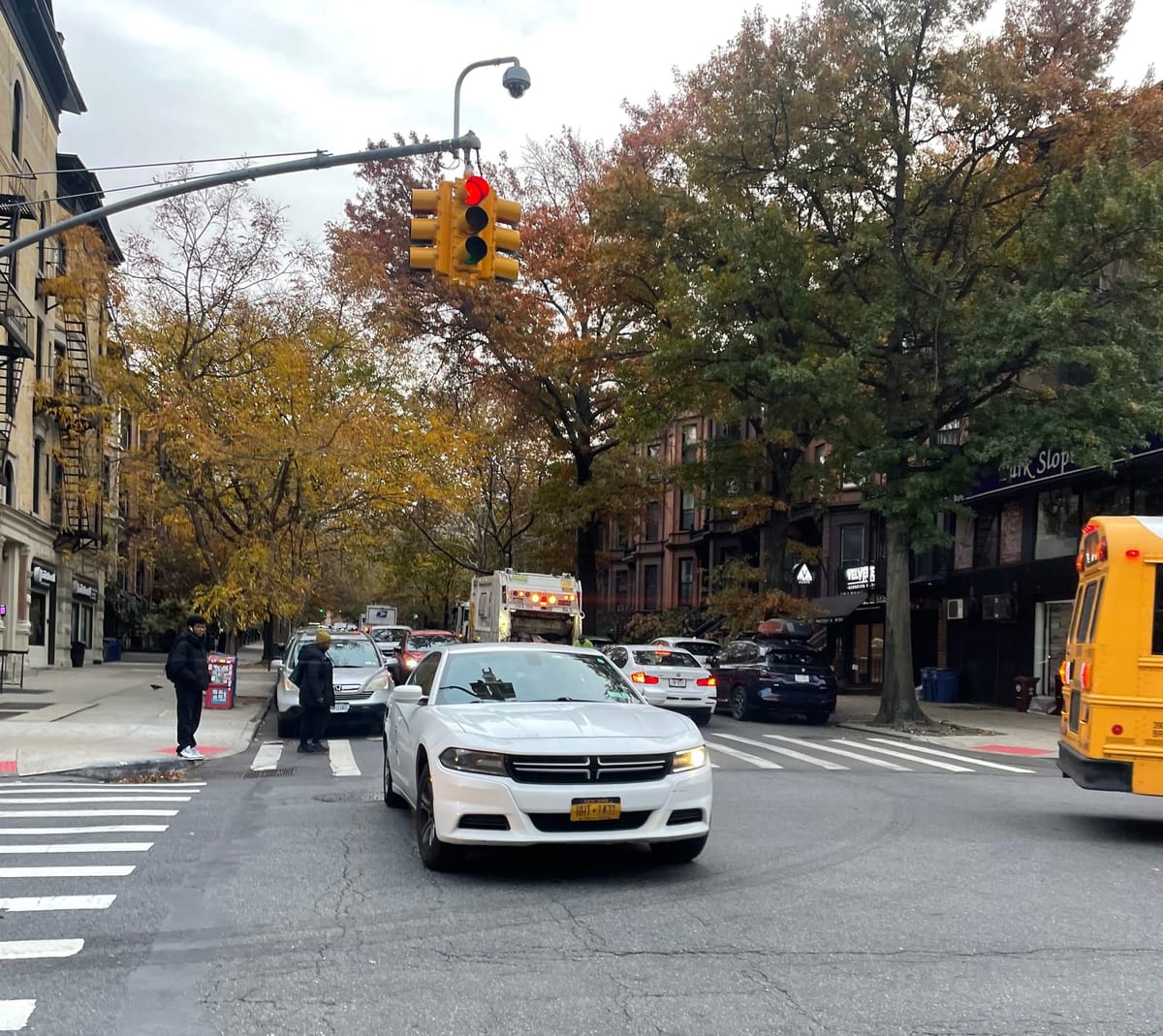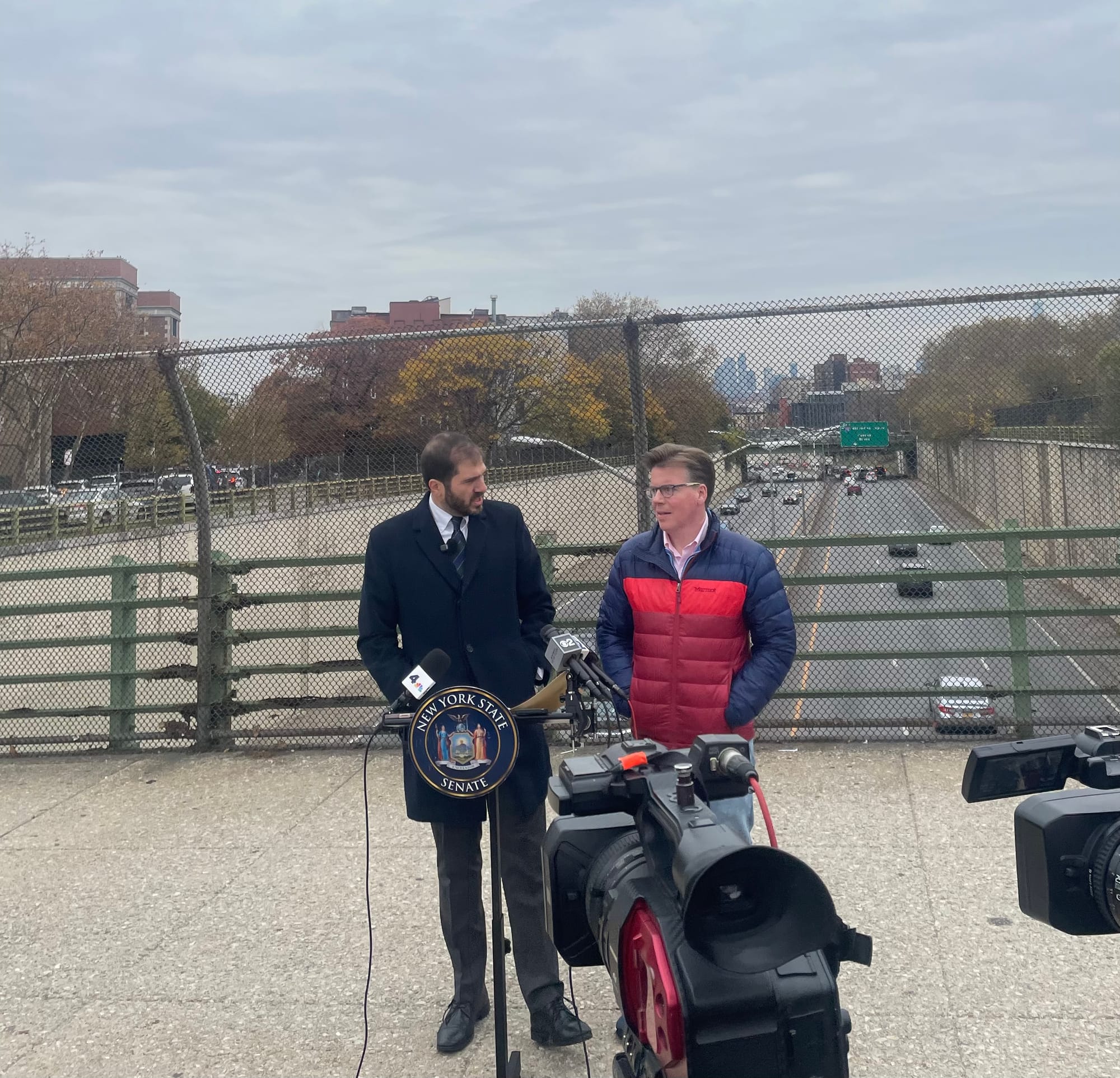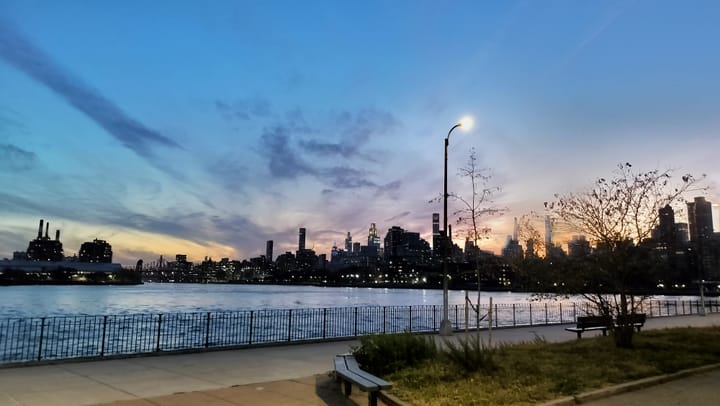Society broke down and all, but you really still need to stop at red lights
I can't believe we need to explain this one, but it seems that we really do

While I was on Seventh Avenue on Union Street one day in March, a car had turned through a red light and was nudging its way into the intersection, which, as is standard for Park Slope, was chock full of children and slow-moving older folks. People were verbally upset at this driver, but I took it upon myself to be the one to physically push back, putting my hands on the hood and saying, “Hey, you’re supposed to let people cross the crosswalk.” I pointed to the white man in the signal light who indicates that crossing is in fact allowed. The driver rolled down his window, looked at me and said, “This isn’t Manhattan!”
Reader, I tell you, I harbor rage fantasies of Hulking out on cars, contained only by the “I’m always angry” restraint of the Hulk himself, violent visions of sprouting heavy green fists that smash down on hoods in anger. This was the closest I’d ever come to actually becoming so angry as to make it reality. What does that even mean, it’s not Manhattan? It’s Park Slope, where there is famously a large concentration of children! It’s as dense as many parts of Manhattan. There are people in your line of sight and you’re legally in the wrong. Fuck you.
I informed the driver, through spittles of anger, that this might not be Manhattan, but “this is the world, where we have rules, so you don’t kill people.” I shared this anecdote in the group chat, where a friend had earlier recalled yelling at a car that had stopped fully in the crosswalk; the driver had yelled back: "Stop expecting people to stop at red lights!”
I hate to be so simple but, look, we do be living in a society, and I do expect you to stop at red lights. Yet running a red in your personal automobile seems to have enmeshed itself as a persistent feature of the general societal collapse that came for some people during COVID. State lawmakers have taken note too. This week I watched state Sen. Andrew Gounardes (D-Bay Ridge) test drive new speed limiter technology that would physically prevent cars belonging to “super speeder” repeat-offender drivers from breaking the speed limit (more on this below). It’s a step in the right direction, and could curb a small amount of the red light running too. But the anti-social behavior that allows someone to frequently ignore a red light maybe runs deeper than a technological fix.
There’s an every-person-for-themselves attitude that has wrapped its tentacles firmly around some people’s brains since COVID, even in the crowded, complex systems of New York City streets. And, it cannot be over stated, it accomplishes nothing. You watch someone gun it through a red just to sit in five cars back at the next red. They’ve wasted gas and saved zero seconds.
So I must insist again: you have to stop at a red light, or else all of society will crumble.

I’ve been thinking about this issue this week because of a report in Streetsblog about a particular intersection in the city, one that could stand in for many, many other less high-profile ones. Reporter Sophia Lebowitz wrote about an NYPD red light crackdown on cyclists at the base of the Williamsburg Bridge on the Lower East Side, which happened while drivers zoomed through red lights, seemingly unimpeded. In 10 minutes, she observed 12 drivers go through the lights over the course of seven red-light cycles, more than one per light.
Meanwhile, the NYPD and commissioner Jessica Tisch have been on a ticket blitz for cyclists since April, writing up red light-running and other offenses at high rates, including setting up an NYPD checkpoint at the same intersection at the Williamsburg Bridge, but just for catching cyclists. No such effort seems to be in place for catching drivers who run red lights. If there was, there would be an NYPD car at every corner in the city, and they would maybe generate enough new ticket revenue to fix any budget shortfall or alleged defunding the NYPD or the city in general may ever face.
The problem is that there seems to be little shame for antisocial behavior behind the wheel of a car. So many of the space-hogging, annoying elements of owning a car — double parking, blocked bike lanes and car alarms that bellow throughout the night — get written off as immutable facts of city living, rarely worthy of enforcement. Running a red is different. It’s a threat powered by gasoline, thousands of pounds of metal, a heavy foot and a desire to cheat the system, even for a microsecond. It’s an active threat. People die.
From 2020 to 2023, 101 people were killed in the city by drivers running red lights, according to a Department of Transportation report; in 2023 alone, 29 people were killed by drivers blowing the red, more than double the average of the last decade. The city has installed 600 red light cameras, covering about 1.5% of all intersections in the five boroughs. I lived near one of these on Atlantic Avenue until last year and regularly saw people barrel through the light anyway, though I enjoyed the satisfying flash of the camera showing that the driver got got.
Most New Yorkers don’t drive, yet, due to our street design, we spend our days dodging heavily armed personal automobiles designed to protect the driver at any cost. New York pedestrians are also a different breed unto themselves: a 2014 study showed that the average time pedestrians take to enter a street from the curb is three seconds; but New Yorkers were actually measured at negative three seconds according to a New York Times Magazine story. New Yorkers, the story notes, look at the traffic light and charge out as soon as it changes, before the walk sign even flashes. Drivers need to respect this New York pedestrian exceptionalism; there are vastly more of us on our feet than there are drivers in their seats.

‘I get that little feeling in my chest every time’
But how do you deal with people who say things like “stop expecting people to stop at red lights?” It’s literally the law; it should be a super law in a place as dense with pedestrians as New York City.
“I have to be very careful when I'm pushing that stroller,” Gounardes told The Groove, of taking his three kids to school every day. His oldest is 4 years old and has taken to riding his scooter on the trip. “I get that little feeling in my chest every time I see him go a little too fast. What if that car is not stopping at the red light? What if that car is not stopping at the stop sign?”
Gounardes and other state lawmakers have come to the realization that the only way to stop at least one version of street scofflaws is that you have to physically prevent their cars from breaking the law.
On Wednesday morning, Gounardes led a demonstration of a device known as an intelligent speed assistance, a speed limiter device that would be installed in cars of the most intractable speed demons in the city. The devices are similar to the “blow and go” DUI ignition locks and would automatically limit a car’s speed to the GPS-determined speed limit of any roadway. Unlike the DUI lock, your passenger can’t help you bypass it. That means no more drag racing in a 25 mph zone, flooring it on side streets or, in some cases, gunning it through a yellow light.
Today I joined @NYC_SafeStreets to test drive a car with ISA speed-limiting tech. The drive was smooth, easy, and most importantly: safe.
— State Senator Andrew Gounardes (@Sen_Gounardes) May 7, 2024
My bill would require these life-saving speed limiters in the vehicles of repeatedly reckless drivers.
Learn more: https://t.co/q3PxoAt2eN pic.twitter.com/90BcqapMpV
Gounardes tested out the speed limiter technology for state lawmakers back in May.
The measure — contained in the Stop Super Speeders Act that passed the state Senate last year and is working its way through the Assembly now — is an admission that other speed-deterrent methods aren’t working for the worst offenders, Gounardes said. The bill calls for the devices to be installed in the cars of drivers who racked up 16 speed camera tickets in a year or get 11 points on their license in 18 months. The state can already suspend someone’s license, but the data show that 75% of people with suspended licenses drive anyway. Impounding is expensive and complicated, Gounardes said; but the speed limiter is relatively simple. Drivers can get it removed in six months or a year of safe driving. The small segment of “super speeders” with loads of speeding tickets and red camera violations, often continue to drive unsafely and put others at risk.
“I think the sentiment, both anecdotally and from the city’s own traffic and safety data shows that since the pandemic, there has still been an increase in speeding,” he said. “I think there’s still this element of coming out of the pandemic of anti-social behavior. People got used to driving a certain way when there's not a lot of people on the road.”
A judge would be able to mandate the devices for recidivist speeders under the law. But the city announced last month it is already moving forward with the devices for its own fleet of non-emergency vehicles. Eventually, all 7,000 non-emergency vehicles will be equipped with the technology, meaning all city cars will never exceed the limits.
‘Don’t be an asshole behind the wheel’
I drive a car about twice a year and every time I do I’m amazed by how much other drivers hate it when you follow basic traffic laws. People will actually speed around you to run the red if you don’t run it yourself. I’m also always amazed by the increasing amount of bells and whistles that seem designed specifically to let the driver be on their phone the entire car ride. Lane guidance, blind side alarms, all these things seem to be a forfeit to the perpetually distracted driver checking their Instagram notifications.
But, the red light issue and speed limit issue seem like situations where the technology could actually come in handy. Why should a car that’s hooked up to all the world’s maps not have a feature that requires you just always go the speed limit? What if it physically stopped you from running a red light, a thing you’re not supposed to ever do?
Mandatory speed limiting is happening in new cars in Europe; but Gounardes said that is something that would have to be handled at the federal level, not by state government. The speed limiter isn’t a civil liberties issue, he said; drivers can still get to work or a doctor’s appointment.
“We’re not taking away your vehicle,” he said. “We’re just making it safer for you and everyone else who’s on the roadway trying to live their daily lives free from the menace of reckless drivers.”
I had a friend visit from North Carolina a few years ago, and she marveled at how complex the subconscious systems of the city were. How, she asked, does everyone know when to walk? How do they know that everyone isn’t going to knock into you on the sidewalk? I responded it comes from assuming, to at least some extent, that everyone else does know what they’re doing and does this all the time. I don’t flinch when a delivery guy on an e-bike stops one foot from me in the crosswalk because I know he does not want to hit me, lest he lose vital pennies of delivery time. Another pedestrian will, mostly, move to make room on the sidewalk when you’re coming by. The city works in a million little microtransactions we make every day, because if we didn’t we would literally all be standing on the sidewalk, unable to move anywhere.
On Wednesday morning, while walking to Key Food to get breakfast supplies, I was thinking about how to get a picture illustrating this story. Before I had even left my street, I saw a driver blow a red; I got my phone camera out in time to capture it. This was at 7:44 a.m., the streets were already full of parents, kids and commuters. The car, I noticed in my picture, had a broken headlight and a passenger side that was smashed to shit from what looked like a heavy sideswipe. I had a hard time believing this was an accidental red light run.
The speed limiter, or more muscular enforcement of red light violations by the NYPD, might seem to some like an overreach by the government. To them, Gounardes has a message:
“Don’t be an asshole behind the wheel,” he said. “Sorry, that’s the reality.”




Comments ()